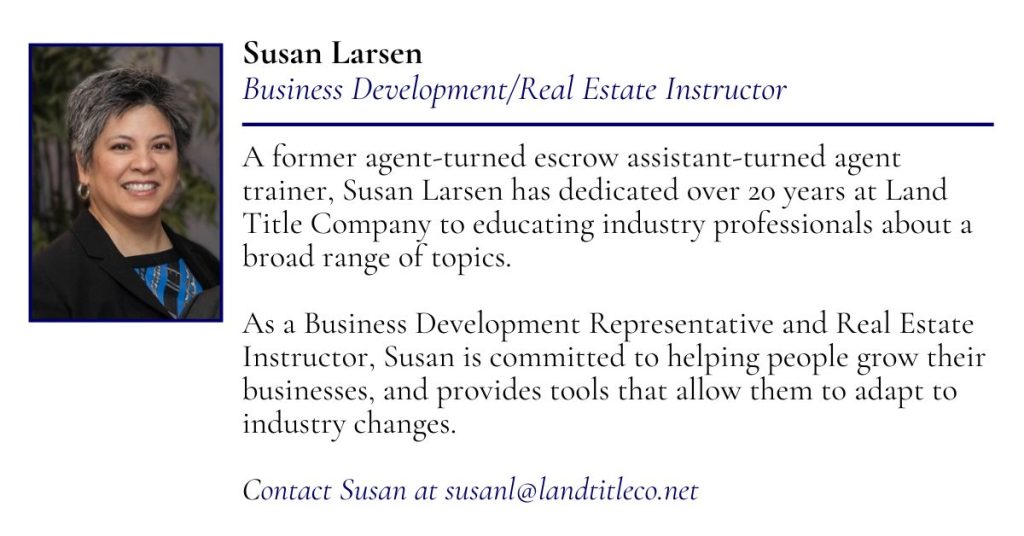Understanding the differences between a Homeowners Association (HOA) and a Planned Unit Development (PUD) is important as both can influence a buyer’s decision, so knowing the key distinctions will help you guide clients effectively.
A Homeowners Association is a private association governing a residential community, enforcing rules (called CC&Rs) on things like property appearance and use. Governing documents include the Declaration of CC&Rs, Bylaws, and Articles of Incorporation, which establish how the Homeowners Association operates. Homeowners Associations also set Rules and Regulations and manage finances, including homeowner dues, which maintain common areas and amenities.
A Planned Unit Development, on the other hand, is a type of development that allows for a mix of housing, commercial, and recreational spaces, all designed within a flexible zoning framework. While Planned Unit Developments may have a Homeowners Association to govern common areas, they’re defined by their Master Declaration, Plat Map, and sometimes a Development Agreement with the local municipality. Planned Unit Development bylaws and rules govern property use, just like in a Homeowners Association, but Planned Unit Developments often include broader land-use agreements.
The governing documents for a Homeowners Association (HOA) and a Planned Unit Development (PUD) define the rules, regulations, and responsibilities for the homeowners and the association or governing body. Here are the primary governing documents for each:
Governing Documents for an HOA:
- Declaration of Covenants, Conditions, and Restrictions (CC&Rs):
- Purpose: This is the most important governing document for an HOA. It sets out the rules that homeowners must follow regarding the use, appearance, and maintenance of their property.
- Contents: It includes restrictions on things like home appearance, landscaping, noise, use of common areas, and more.
- Binding: When someone purchases property within an HOA, they automatically agree to abide by the CC&Rs.
- Bylaws:
- Purpose: The bylaws outline how the HOA is structured and operates, including governance procedures.
- Contents: It includes details about the board of directors (election, meetings, responsibilities), voting procedures, and how often HOA meetings should be held.
- Articles of Incorporation:
- Purpose: These legal documents create the HOA as a non-profit corporation under state law.
- Contents: The Articles of Incorporation establish the HOA as a legal entity, providing details about its purpose, name, and formation.
- Rules and Regulations:
- Purpose: These are additional rules set by the HOA board to further clarify or expand upon the CC&Rs.
- Contents: They may cover issues like parking regulations, use of amenities (e.g., pools or clubhouses), pet policies, or noise restrictions.
- Amendable: Unlike the CC&Rs, rules and regulations are often more easily amended by the board.
- Operating Budget and Financial Documents:
- Purpose: These documents outline the financial obligations of homeowners, including dues, assessments, and how the funds will be used to maintain common areas and amenities.
- Contents: Budgets, financial statements, and any special assessments for unexpected expenses.
Governing Documents for a PUD:
- Declaration or CC&Rs:
- Purpose: Similar to an HOA, a PUD’s master declaration (or CC&Rs) outlines the rights and responsibilities of property owners within the PUD and establishes the rules for the community.
- Contents: It includes restrictions related to land use, architectural guidelines, maintenance of common areas, and sometimes commercial properties within the PUD.
- Plat Map:
- Purpose: A plat map is a detailed survey of the PUD that shows the individual lots, common areas, streets, and any commercial or recreational spaces.
- Contents: It visually displays the layout of the entire development and designates which areas are private versus common.
- PUD Bylaws:
- Purpose: The bylaws govern the operation of the PUD’s management association (similar to an HOA).
- Contents: It includes information about the governance structure, how the board operates, voting procedures, and the duties of the board and members.
- Articles of Incorporation (if applicable):
- Purpose: If the PUD has an association like an HOA, the Articles of Incorporation legally create that association as a non-profit entity under state law.
- Contents: The name, purpose, and general powers of the association are outlined.
- Rules and Regulations:
- Purpose: Additional rules that govern the day-to-day operations within the PUD, including use of common areas and recreational facilities.
- Contents: Rules on parking, landscaping, noise, pets, and other community standards, much like in an HOA.
- Development Agreement:
- Purpose: This document is often part of a PUD’s formation and outlines the agreement between the developer and the local municipality regarding zoning, infrastructure, and development plans.
- Contents: It specifies how the property is to be developed, including land use, building guidelines, and any concessions made to the local government.
Understanding these differences helps clients make informed choices, especially when considering potential restrictions or benefits that come with these communities. If you need clarity or have any questions call Land Title Company’s Title Department at 360-692-2233!
Sources/Resources:
- National Association of Realtors (NAR) – Provides industry-standard information about real estate communities, including HOAs and PUDs. Website: www.nar.realtor
- Washington State Real Estate Commission – Offers guidelines for agents in Washington state, which may include distinctions between different types of real estate developments. Website: www.dol.wa.gov/business/realestate/
- Community Associations Institute (CAI) – A resource for understanding homeowners associations, including governing documents like CC&Rs, bylaws, and rules and regulations. Website: www.caionline.org
- Washington State Planned Unit Development Act – Provides legal definitions and regulations for PUDs in Washington state. Website: www.mrsc.org (Municipal Research and Services Center)


